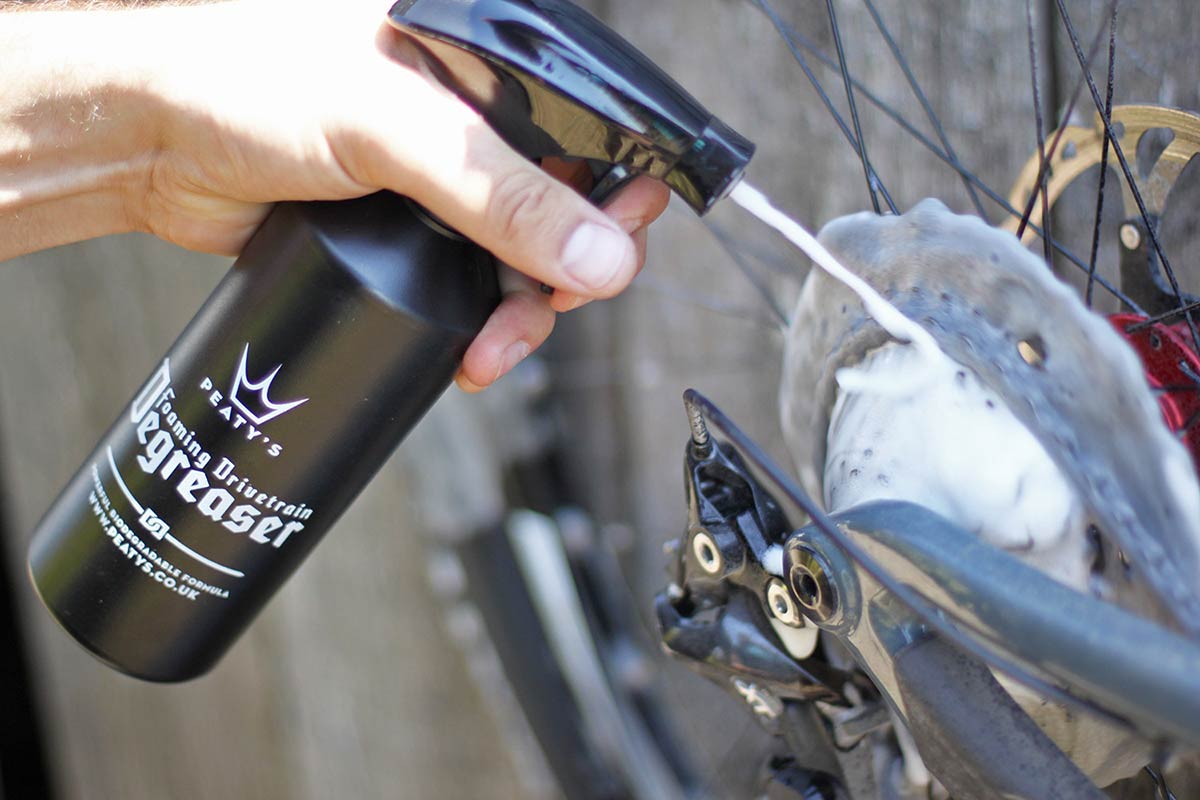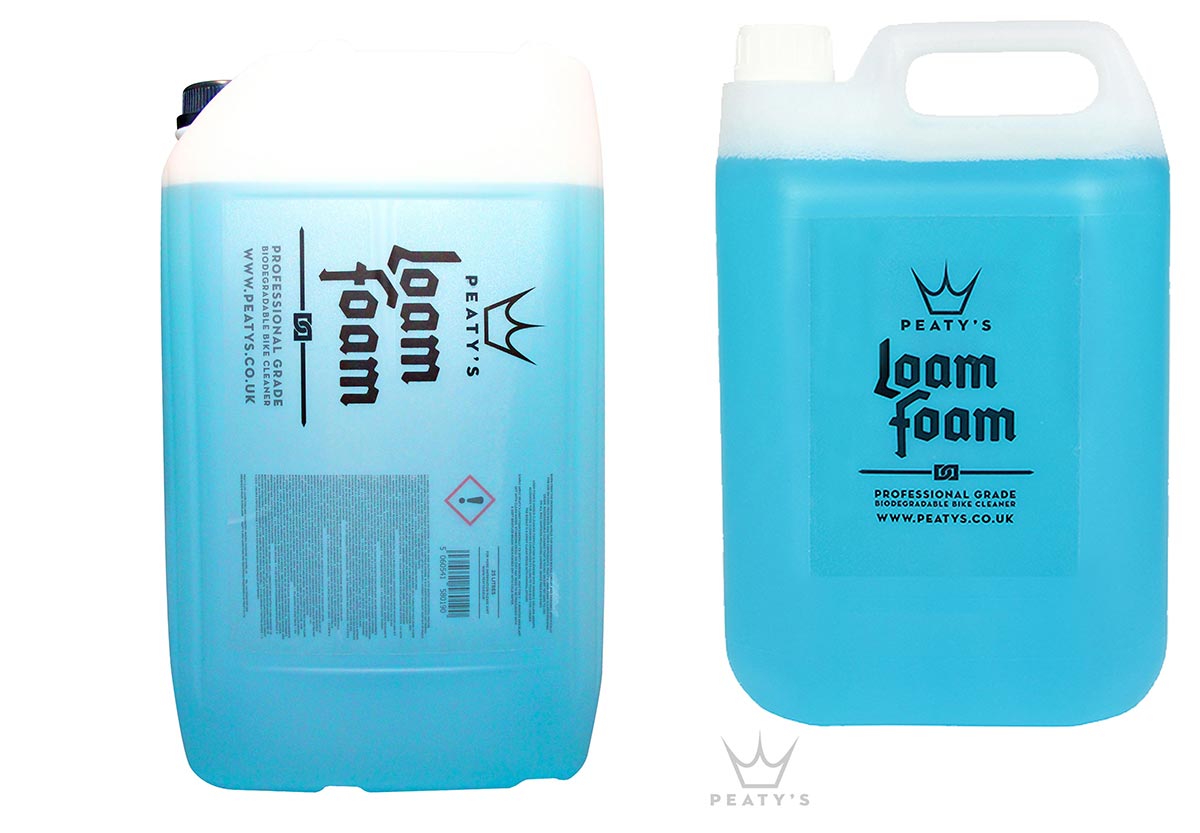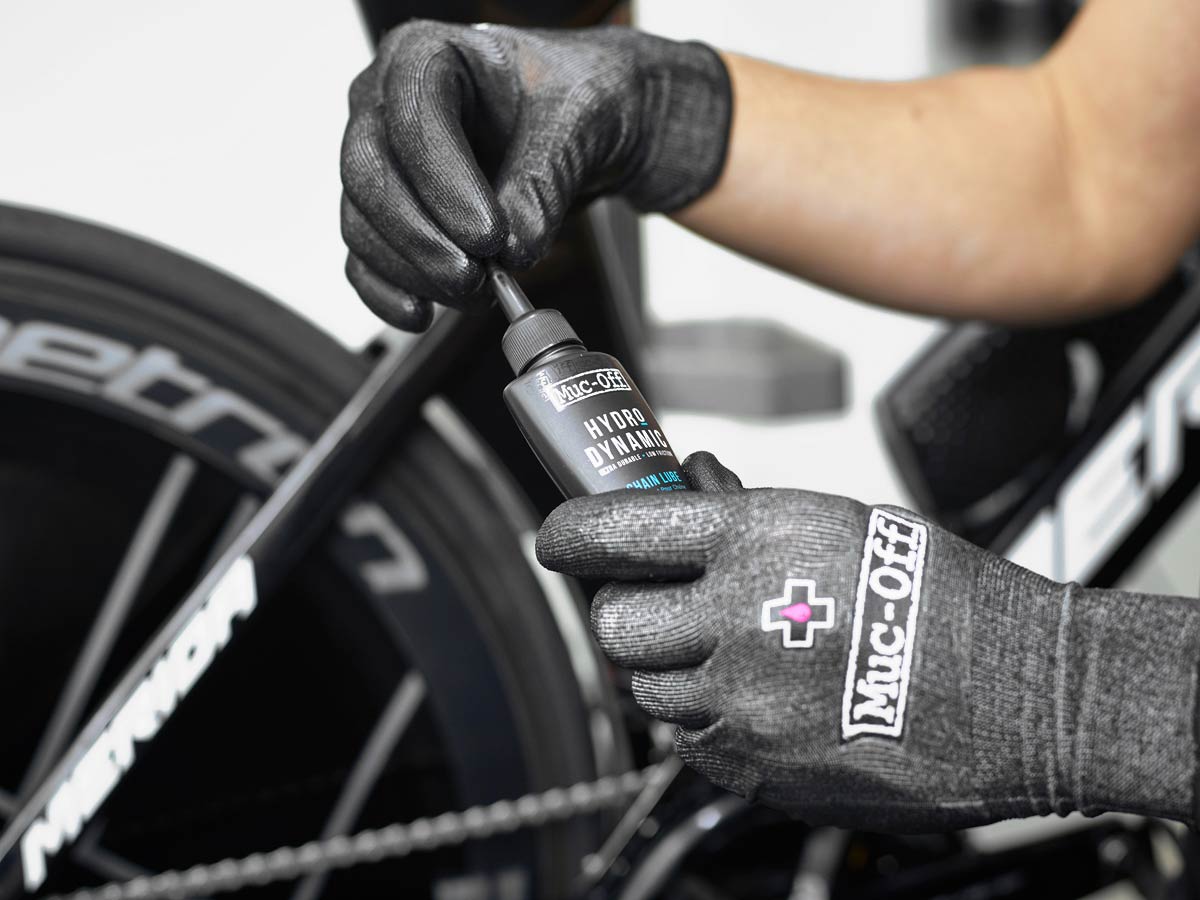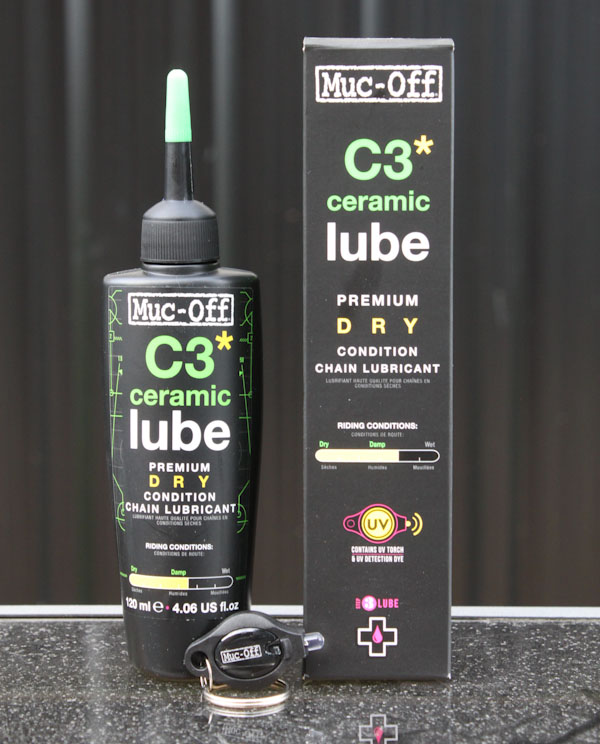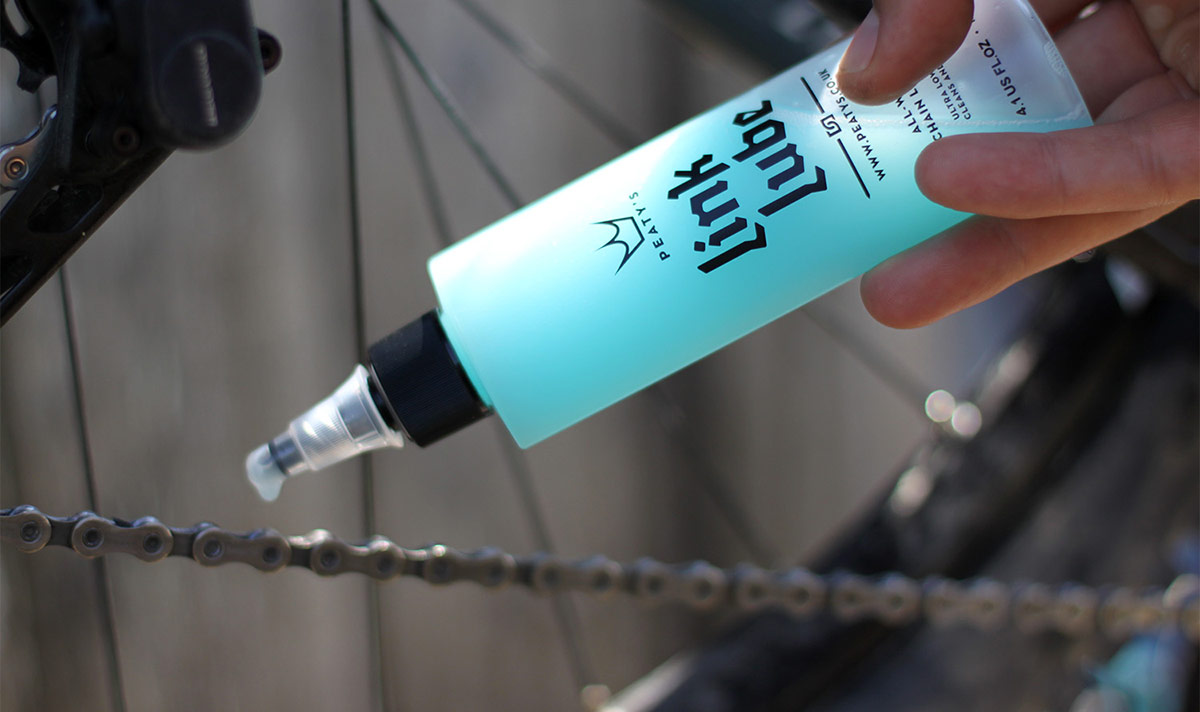We know, there’s no such thing as a stupid question. But there are some questions you might not want to ask your local shop or riding buddies. AASQ is our weekly series where we get to the bottom of your questions – serious or otherwise. This one is about bike cleaner products. Hit the link at the bottom of the post to submit your own question!
Bike washing. Should you or shouldn’t you? And if you do, what bike cleaning products should you use to make sure you don’t damage your pivot bearings, degrade those precious suspension seals or contaminate your all-important disc rotors? Muc-Off, Crankalicious, and Peaty’s answer these questions and more.
As far as I can tell, bike cleaners like those offered by MUC-OFF, Crankalicious, Fenwick’s, etc., are just glorified washing up liquids, disguised in fancy colors to make us feel like they are safe to use on our bikes. How can these companies be sure that these detergents only clean the mud off, but leave the grease protecting the bearings untouched?
CRANKALICIOUS: To say that all detergents are the same, whether dish soap or bike wash, is like saying that all dogs are the same. They may have four legs and bark, but a Chihuahua isn’t the same as a Great Dane.

Generalizations can be unhelpful; for example, dish soap contains salt to soften water and clean glass – there is no such requirement in a bike wash and salt could also lead to corrosion of certain components.
You can clean general mud off relatively easily, but grease takes a lot of shifting – a strong solvent, rather than water or a mild soap solution. So we formulate products to be the right strength and with the right ingredients to ensure they do the right kind of work.
If you applied a chain cleaner to your bearings and allowed it to dwell and penetrate, of course it would affect the grease.
But this is why the usage instructions are critical. Our Limon Velo drivetrain cleaner is a water-based emulsifier (gentler than a neat high strength solvent) in the form of a thicker spray rather than a thin liquid, so it covers the cassette nicely without penetrating deeper than it needs to. You then wash it off, diluting and removing the residue.
This means that whilst it could worry bearing grease in theory, it should never worry it in reality – especially given the fact that modern greases and lubricants are designed to cling on for as long as possible.
MUC-OFF: Our Nano Tech Bike Cleaner was developed and thoroughly tested to ensure it is safe on all parts of your bike. It contains revolutionary Nano Technology that breaks down dirt and grime on microscopic levels, while also caring for your bike’s delicate finish.
We only use the finest ingredients and surfactants and it doesn’t even need any of those nasty, dangerous acids or chemicals. It’s also biodegradable, free from acids, CFCs and solvents, and it’s alkaline based so you can clean away with a guilt-free conscience.

It is not a degreaser so it won’t affect grease if it does ingress into those areas (which it shouldn’t as the force from the spray trigger or our bike-specific pressure washer isn’t high enough to drive moisture in). The water soluble formula also rinses off easily with water after use so any excess cleaner is removed.
PEATY’S:
Grease Stripping
Quite the opposite! Washing up liquid is much more likely to strip bearing grease as the degreasing agents they use are indiscriminate to efficiently remove anything from chip pan grease to leftover casserole.
They’re not designed to be efficient on the types of soiling, road film or brake dust you’d find on a bike and on top of that are designed to be used with significant agitation – we all use scouring pads and even wire sponges with washing up liquid to remove tough dirt.
Even our Foaming Drivetrain Degreaser has been formulated to be kind to waterproof bearing greases so will only attack chain lubes, dirt, grit and grime. There’s only one product in our range which will actively strip bearing grease and that’s our XXX Solvent Degreaser which is designed for full bearing strip downs.
Sensitive Materials
Washing up liquids have been designed for use on crockery, cutlery, pots and pans so have not been formulated for use on sensitive technical materials such as anodised aluminium (where colour pop is king!), powder coat paints, rubbers, carbon fibre, brake surfaces and – as you rightly mention – bearing greases.
Using washing up liquid on these materials can lead to premature dulling of colours, cracking of rubbers and stripping out of bearing grease.
Corrosion Inhibitors
Crockery is typically ceramic and cutlery made from stainless steel so, unlike LoamFoam, washing up liquids do not need to contain vital corrosion inhibitors which help to prevent your components rusting or oxidizing after washing.
Foam = Clean for Longer
The foaming characteristics of washing up liquid are very different to LoamFoam. Unlike washing up liquids (and many other dedicated bike cleaners), which mostly run straight off your bike and onto the floor, LoamFoam has added organic gelling agents which cling to the dirty surface for longer and contains additives.
These will not only gently remove the dirt from the bike but suspend the dirt away from the surface until it can be rinsed away preventing that pesky thin film of dirt when the bike is dry.
In short – there are two options when trying to improve the performance of a cleaning product:
- Make it stronger chemically. This method can make a powerful cleaner very easily however, this also increases warning labels, reduces environmental friendliness, increases import tariffs and increases shipping costs – not to mention increasing the risk of damaging paint and anodizing finishes on your bike!
2. Make it thicker – so it sticks to the dirt longer and so it cleans more efficiently.
(We went for #2)
Are bike cleaners OK to use on forks and shocks or is it possible for the detergent to damage the seals?
CRANKALICIOUS: The seals used will be highly resistant to all sorts of chemical attach – again, what looks like a rubber seal could be a highly advanced material (Viton etc.). Granular dirt does more damage to seals.
If there is a small chance of damage to a seal from a cleaner or detergent it will be far less than the danger posed by never cleaning or correctly lubricating the assembly in the first place. It’s like fearing that your rubber car tyres will dissolve into a sticky mess if you drive through spilled gasoline in a fuel station. They don’t.
Obviously, some bike cleaners are more gentle than others and application is critical. Leaving an aggressive solvent to penetrate a seal for hours will potentially have more impact than a quick wipe-over with a gentler product.
MUC-OFF: Our bike cleaner is completely safe on all surfaces including seals.
PEATY’S: The level of salts used in LoamFoam make it perfectly safe on rubber seals, unlike washing up liquids which have very high salt levels which can prematurely perish or dry out rubber seals.
Will common bike wash sprays contaminate my disc brakes and reduce performance?
CRANKALICIOUS: Some bike washes are pH neutral and won’t affect disc brakes at all, but others may be caustic and potentially affect them in theory. Yet in practice, the chemical is washed off swiftly and the chemical action will probably do no more than clean them more thoroughly than normal.
You just won’t see deep pitting or corrosion from these products unless you leave them sitting in a bike wash concentrate for hours. This just isn’t how bikes are cleaned. Bike washes are more of a danger to sensitive anodized surface finishes than robust metal components like this.

There’s arguably more risk to a disc braking system in accidentally saturating the pads in oil when water proofing or lubricating components. That would certainly reduce performance.
MUC-OFF: Our Nano Tech bike cleaner is safe on all parts of your bike including disc pads and rotors. We specifically developed additives for the cleaner that ensure it doesn’t affect braking performance.
We also have a disc brake cleaner which we would recommend using as part of every bike wash process! Regarding protection sprays and aerosols, we would absolutely recommend covering disc brakes. We have a patented neoprene disc brake cover set in our range for this very purpose!
PEATY’S: No, the anti-corrosive films left behind by LoamFoam are nitrite & boron-free and are designed not to contaminate brake disks/pads. They quickly (and silently) come off the braking surfaces once you start braking without reducing performance.
Which type of drivetrain lubricant, wet or dry, offers the least friction?
CRANKALICIOUS: You’d need to test this scientifically, but when lubricants get dirty the friction is going to increase. An even and complete coverage, good curing time and a sensible removal and reapplication regime is the best path to less friction.

We use a ceramic wet lubricant that dries to a non-sling invisible film and can be ridden in all conditions; the old distinctions of wet/dry lube for different usage conditions is potentially less relevant today with modern lubrication technology.
We prefer a wet lube for penetrating deep into chain links/pins but worrying about friction in a chain is likely to be a red herring for any amateur rider. The number of lost watts is going to be insignificant and unnoticeable in most real world cases.
MUC-OFF: This is a little more complex than whether it’s wet or dry. Base level dry lube is less sticky and attracts less contamination but it’s not as straightforward as that unfortunately.
It depends on the additives used too. Our hydrodynamic lube is super fast but its base is more akin to a traditional wet lube. We have an in-house team of scientists who do our R&D and here’s what the Head of that team, Dr Martin Mathias, says in response to your question:
“Whilst the lowest CoF (Coefficient of Friction) is at the heart of speed, it only tells a limited story without explanation. Lubricants have additives to improve aspects like CoF but many additives, unlike Muc-Off’s, are not specifically developed for loads and speeds seen on the bicycle.”
“Extreme Pressure additives, for example, may not activate at the lower loads and speeds seen on the bicycle, so standard test methods such as ASTM may not be applicable. A more robust test is the Stribeck curve which displays the performance of the lubricant under different loads and speeds which would be more applicable to the bicycle.”
“Muc-Off is continually developing test methodologies that more accurately represent the complex tribology seen in the bicycle chain, and whilst we will report the CoF, it will be along with the very important loads and speeds that are applicable to the area on the bicycle the lubricant is for.”
“Of course, there are other huge factors that the CoF alone does not indicate: durability and wear. A simple CoF reported could be very low but with terrible durability.”
“We have seen this with some other products that display their very low CoF for only 15 mins and incur massive wear over longer durations.”
“This is why it was so important for us to have developed a range of lubricants to match the rider, type of riding and weather. From Massive Watts and out-and-out performance we developed for the Pro-teams and Olympics, to extremely durable and weather resilient lubes for the low maintenance daily commute.” – Dr Martin Mathias.
PEATY’S: Big question! Could probably be an article in itself! Ha!
Simply looking at efficiency and friction, riding only in very dry/clean (lab-like) conditions, then a paraffin wax-based (dry) lube is about the best you can get.

It’s not quite that simple in reality though because we don’t ride in labs – we ride in all different types of weather conditions on a huge amount of varying surfaces, so purely looking at friction alone isn’t a true reflection of a great consumer chain lubricant.
In truth, there’s an inverse correlation then between pure lab-based drivetrain efficiency and the expectations that are placed on a consumer product.
This goes far beyond pure drivetrain efficiency and into durability (in different types of weather and riding conditions), aesthetic cleanliness, ease of cleaning, environmental impact, quietness, corrosion protection and, most of all, convenience.
Our LinkLube All-Weather is a multi-compound chain lube with the active component being a compound of waxes (which you’d typically find in dry lubes) and greases (which you’d typically find in wet lubes). This compound is the blue part you can see in the bottle when the lube settles out into two parts.
When the lube is settled out you’ll also see a clear base oil. This is a very lightweight, anti-corrosive penetrating oil which, when shaken together with the compound, will find it’s way into every nook and cranny of your chain, carrying the compound with it.

Once it reaches the inner depths of your chain links, the base oil will drive out moisture, grit and grime (cleaning the chain!) and then separate from the compound again – leaving the waxes and greases behind to reduce friction, reduce vibration and so reduce drivetrain noise and wear.
The chain cleaning properties of LinkLube will also help to prolong the life – and so the efficiency – of a drivetrain. When LinkLube is first used on a used (but seemingly clean) drivetrain, the chain can go black pretty quickly.
This is actually the LinkLube pushing out grime that has been hiding away inside the rollers. Simply keep degreasing and re-applying a few times and your chain will run truly clean once again.
Another very important factor we often see people go wrong with is in the application of chain lube – i.e. you should only apply it to the inside rollers then wipe away any excess from the outside of the chain.
Over applying lube and/or leaving an excess of lube on the outside of the chain will only attract more dirt and grime, leading to premature drivetrain wear and a drop in efficiency. Less is more!
Are the pressurized bike washers available at trail centers fit for purpose or will they damage my mountain bike?
CRANKALICIOUS: They will be fine if used correctly, i.e., at a distance and with due care and attention.
MUC-OFF: This completely depends on the equipment each trail center is using. Many of our partner trail centers and bike parks have installed our Muc-Off Bike-Specific Pressure Washers into their wash stations which – when using the bicycle lance – are safe on the entire bike, including bearings and seals.

PEATY’S: All power washers have the ability to damage a mountain bike. Hold the jet too close to your seals and you’ll pump water into your fork lowers … hold it too close to your headset, freewheel, hub or bottom bracket bearings then you can force out the bearing grease.
That said pressure washers CAN be a very quick way of blasting your bike down after a long session at a trail centre as long as they’re used with common sense and mechanical sympathy.

As a general rule: when rinsing off moving parts like bearings, seals and bushes, hold the lance far enough back that the pressure is no more than blasting through a deep puddle – then feel free to get in closer on non-moving parts like tyres, rims, frames, grips etc.
Spray your bike down with LoamFoam before heading to the wash station and you can speed the job up while giving everyone waiting a minty fresh blast.
Thank you to Dom Colbeck, Director of Crankalicious, Dr Martin Mathias of Muc-Off and Bryn Morgan, Design Nerd of Peaty’s for contributing to this week’s AASQ!
Got a question of your own? Click here to use the AASQ form to submit questions on any cycling-related topic of your choice, and we’ll get the experts to answer them for you!


